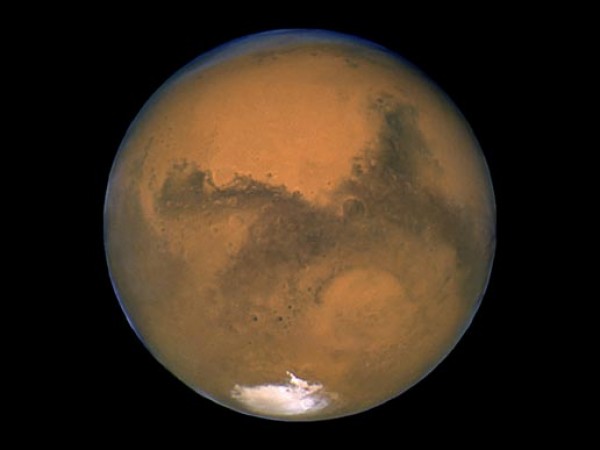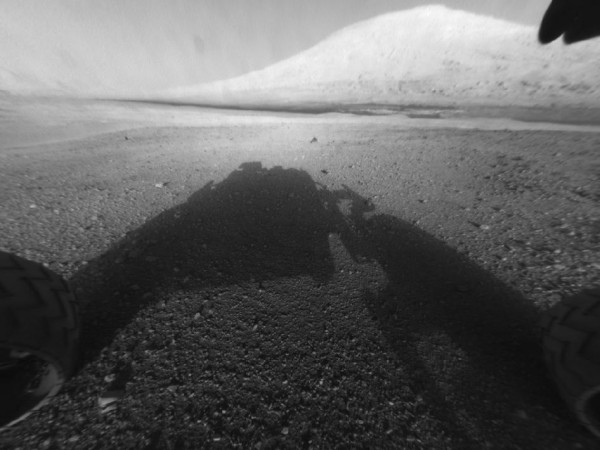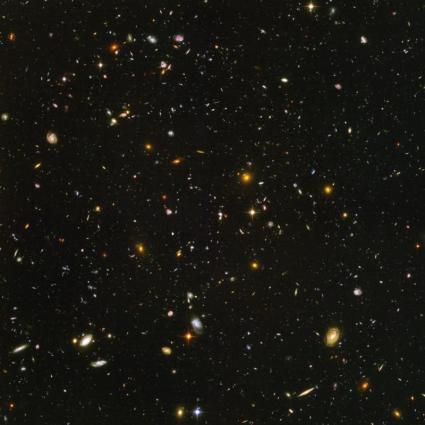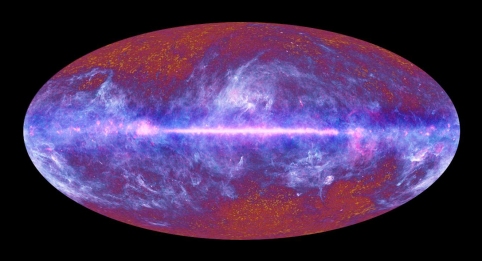Totally Wacky Facts About Space Series: Mind Benders Written by Emma Carlson Berne Capstone Press 8/01/2015 978-1-4914-6526-4 240 pages Ages 8—12 “Ever wondered what astronauts do with their dirty underwear? Or which astronaut played golf on the moon? If you’re looking for wacky factoids and out-of-this-world trivia, this book has it …![]()
Viewing: Blog Posts Tagged with: Hubble, Most Recent at Top [Help]
Results 1 - 5 of 5
Blog: Kid Lit Reviews (Login to Add to MyJacketFlap)
JacketFlap tags: Children's Books, NonFiction, Middle Grade, Series, NASA, planets, stars, Books for Boys, outer space, astronauts, Capstone Press, Hubble, 4stars, Library Donated Books, Emma Carlson Berne, Totally Wacky Facts about Space, Add a tag
Blog: OUPblog (Login to Add to MyJacketFlap)
JacketFlap tags: MNRAS, Monthly Notices of the Royal Astronomical Society, Alex R. Pettitt, galaxy arms, The morphology of the Milky Way, velocity map, Journals, galaxies, astronomy, milky way, Hubble, spiral galaxies, *Featured, Physics & Chemistry, oxford journals, Science & Medicine, Add a tag
Many of you have likely seen the beautiful grand spiral galaxies captured by the likes of the Hubble space telescope. Images such as those below of the Pinwheel and Whirlpool galaxies display long striking spiral arms that wind into their centres. These huge bodies represent a collection of many billions of stars rotating around the centre at hundreds of kilometers per second. Also contained within is a tremendous amount of gas and dust, not much different from that found here on Earth, seen as dark patches on the otherwise bright galactic disc.
Pinwheel and whirlpool spiral galaxies, a.k.a. M101 and M51:


Yet, rather embarrassingly, whilst we have many remarkable images of a veritable zoo of galaxies from across the Universe, we have surprisingly little knowledge of the appearance and structure of our own galaxy (the Milky Way). We do not know with certainty for example how many spiral arms there are. Does it have two, four, or no clear structure? Is there an inner bar (a long thin concentration of stars and gas), and if so does it rotate with the arms, or faster than them? Unfortunately we cannot simply take a picture from outside the galaxy as we can with those above, even if we could travel at the speed of light it would take tens of thousands of years to get far away enough to get a good picture!


The main difficulty comes from that we are located inside the disc of our galaxy. Just as we cannot know what the exterior of a building looks like if we are stuck inside it, we cannot get a good picture of what our own galaxy looks like from the Earth’s position. To build a map of our galaxy we rely on measuring the speeds of stars and gas, which we then convert to distances by making some assumptions of the structure. However the uncertainty in these distances is high, and despite a multitude of measurements we have no resounding consensus on the exact shape of our galaxy.

There is, however, a way around this problem. Instead of trying to calculate distances, we can simply look at the speed of the observed material in the galaxy. The movie above shows the underlying concept. By measuring the speed of material along the line of sight from where the Earth is located in the galaxy, you built up a pseudo-map of the structure. In this example the grey disc is the structure you would see if the galaxy were a featureless disc. If we then superimpose some arm features, where the amount of stars and gas is greater than that in the rest of the galaxy, we see the arms clearly appear in our velocity map. Maps of this kind exist for our galaxy, with those for hydrogen and carbon monoxide (shown below) gas displaying the best arm features.

This may appear the problem is solved; we can simply trace the arm features and map them back onto a top-down map. Unfortunately doing so introduces the problems as measuring distances in the first place, and there is no single solution for mapping material from velocity to position space.
A different approach is to try and reproduce the map shown above by making informed estimates of what we believe the galaxy may look like. If we choose some top-down structure that re-creates the velocity map shown above, that we have observed directly from here on Earth, then we can assume the top-down map is also a reasonable map of the Milky Way.
Our work then began on a large number of simulations investigating the many different possibilities for the shape of the galaxy, investigating such parameters as the number of arms and speed of the bar. Care had to be taken with creating the velocity map, as what is actually measured by observations is the emission of the gas (akin to temperature). This can be absorbed and re-emitted by any additional gas the emission may pass through en route to the Earth.
In the two videos below are our best-fitting maps found for a two armed and four-armed model. Two arms tend not to produce enough structure, while the four-armed models can reproduce many of the features. Unfortunately it is very difficult to match all the features at the same time. This suggests that the arms of the galaxy may be of some irregular shape, and are not well encompassed by some regular, symmetric spiral pattern. This still leaves the question somewhat open, but also informs us that we need to investigate more irregular shapes and perhaps more complex physical processes to finally build a perfect top-down map of our galaxy.
Two-armed galaxy:
Four-armed galaxy:
The post The shape of our galaxy appeared first on OUPblog.
Blog: OUPblog (Login to Add to MyJacketFlap)
JacketFlap tags: Geography, mars, NASA, telescope, curiosity, place of the year, hubble, Atlas of the World, POTY, rover, curiosity rover, Place of the Year 2012, poty 2012, mars’, Social Sciences, Editor's Picks, *Featured, Add a tag
MARS!
It’s a city! It’s a state! It’s a country! No — it’s a planet! Breaking with tradition, Oxford University Press has selected Mars as the Place of the Year 2012.
Mars, visible in the night sky to the naked eye, has fascinated and intrigued for centuries but only in the past 50 years has space exploration allowed scientists to better understand the red planet. On 6 August 2012, NASA’s Curiosity Rover landed on Mars’ Gale Crater, and by transmitting its findings back to Earth, Curiosity has made Mars a little a less alien. Among many other accomplishments, Curiosity has swallowed Martian soil and discovered an ancient stream bed. Today, NASA is expected to make a possibly mars-shattering announcement at the annual meeting of the American Geophysical Union.
With an eye to the future of scientific discovery, Oxford University Press has chosen Mars in celebration of the place that has kept Earthlings excited and engaged this year. Your votes, combined with the votes of OUP employees, and the opinion of our expert Atlas of the World committee, easily led to Mars’s victory, outperforming Syria, London, Calabasas (California, USA), Greece, Istanbul, CERN, Senkaku/Diaoyu Islands, Artic Circle, and Myanmar/Burma.
Here are some of the many reasons why we’re so excited about Mars:
- While scientists have been mapping Mars from afar since the 19th century, it still represents the new and unknown — the fascination of cartographers and atlas-makers.
- Space exploration! Astrophysics! Astronomy! Geophysics! Astrobiology! There’s much to know about the universe and Earth’s place in it, and Mars is just one fascinating piece in the puzzle.
- Mars is home to the highest peak in the Solar System (Olympus Mons), but no life forms (as far as we know).
- Space exploration poses problems for traditional international diplomacy. The Outer Space Treaty is only the beginning of a complex legal framework.
- Although named after the Roman god of war, Mars acts as a muse to some of the great writers and artists, including H.G. Wells and David Bowie.
- Did Mars Curiosity steal your iPod? Curiosity wakes up to these tracks and premiered will.i.am’s Reach for the Stars by beaming the song back to earth. Even Britney Spears wants to know more.
- Mars continues to inspire new generations to study, to dream, and to stay curious.
We’ll be looking in depth at various facets of Mars on the OUPblog this week. You can check back here for the latest posts. We invite your comments and hope that you continue to stay curious!
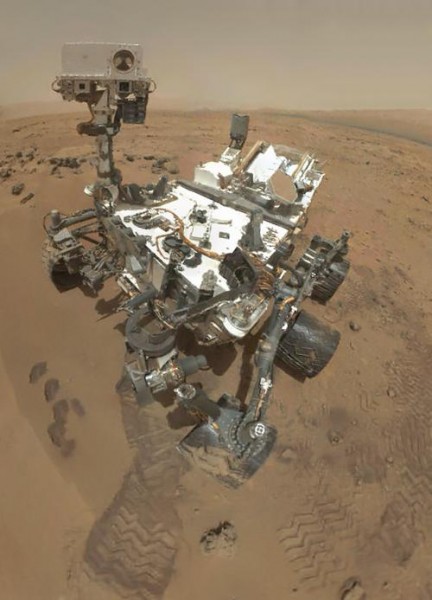
Curiosity Rover takes a self-portrait, reminding you to stay curious, OUPbloggers. Image Credit: NASA/JPL-Caltech/Malin Space Science Systems
Oxford’s Atlas of the World — the only world atlas updated annually, guaranteeing that users will find the most current geographic information — is the most authoritative resource on the market. The Nineteenth Edition includes new census information, dozens of city maps, gorgeous satellite images of Earth, and a geographical glossary, once again offering exceptional value at a reasonable price.
Subscribe to the OUPblog via email or RSS.
Subscribe to only geography articles on the OUPblog via email or RSS.
Blog: Keith Mansfield (Login to Add to MyJacketFlap)
JacketFlap tags: Science, space, time travel, Rush, Hubble, Quercus, ESA, Stuart Clark, relativity, Alcubierre Drive, Planck Telescope, Hubble Ultradeep Field, Cygnus X1, first stars, book reviews, Add a tag
By definition, the Universe is a pretty big place, so the questions we ask about it tend to produce suitably mind-boggling answers. That’s one of the reasons why astronomy and cosmology can be such fascinating subjects.
Stuart Clark, author of The Sun Kings, has just published a new book in the Quercus Big Questions series called “The Universe”. Last Wednesday, he gave a talk on those same questions to a packed audience at the University of Hertfordshire. It was so popular that nearly a hundred people had to be turned away. I’m disappointed for them, but thrilled that popular science and, especially, astronomy, has really caught the public’s imagination.
The book covers twenty questions you might want to ask about the Universe, beginning with “What is it?” and going all the way through to asking “If it had a creator”. I didn’t expect Stuart to be able to cover everything in between in an hour and a quarter, but he managed the contents list impressively. Especially when he began by showing this image from the European Space Agency’s (ESA’s) Planck observatory/telescope and saying that here is everything that is, that ever was and that ever will be.
The first thing to say is that there were more questions than answers. It was refreshing to hear a scientist speak with such an open mind, without claiming that all the major debates are settled. The talk flowed very well, and some of the questions covered were:
What is the Universe?
How old is the Universe?
How did the Universe form?
What were the first celestial objects?
Can we travel through time and space?
What are black holes?
What is dark energy?
How will the Universe end?
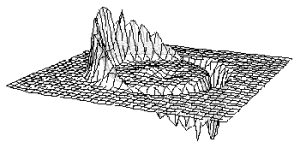 Stuart didn’t talk about the aspects of relativity theory that allow time travel into the future, instead showing a representation of the Alcubierre Drive that, theoretically, could allow for faster than light travel, surfing a self-generated wave of antigravity. Personally, I found the discussion on the very first celestial objects the most thought-provoking. Afterwards we went for a beer in a local Hatfield pub and the conversation moved onto the astronomically connected music of Canadian rockers Rush, with songs such as Cygnus X1 (the first black hole candidate to be discovered) and Natural Science.
Stuart didn’t talk about the aspects of relativity theory that allow time travel into the future, instead showing a representation of the Alcubierre Drive that, theoretically, could allow for faster than light travel, surfing a self-generated wave of antigravity. Personally, I found the discussion on the very first celestial objects the most thought-provoking. Afterwards we went for a beer in a local Hatfield pub and the conversation moved onto the astronomically connected music of Canadian rockers Rush, with songs such as Cygnus X1 (the first black hole candidate to be discovered) and Natural Science.
If anyone has a q
Add a CommentBlog: OUPblog (Login to Add to MyJacketFlap)
JacketFlap tags: public domain, Blogs, Current Events, A-Featured, NASA, booker prize, AIG, Hubble, Add a tag
by Cassie, Publicity Assistant
Happy Friday everyone! We’re sneaking out a bit early to go bowling today, aren’t you jealous? The week will end with beer and bowling balls, which is about as much as you can ask for in a week. I go on vacation next Thursday, so you all will be without me for a little while. Can you pretend to notice so I feel better? Thanks! In the meantime, here are some links to keep you occupied until you sneak out for your own bowling match.
All of us here at OUP send our condolences to Natasha Richardson’s family and friends. There are many touching articles out there about this week’s tragedy, take some time to check some out.
The geek in me really wants one of these, but the practical person tells me it’s probably not very comfortable.
The long lists for the Booker and the Orange prizes have been announced.
I had no idea eavesdropping was so complicated!
It’s a start, at least…some at AIG are paying back their bonuses.
Remember when I posted a link about voting for the next celestial body Hubble studies? (Didn’t I do that? Or was it naming the ISS?) Here’s the winner!
Spacebat, we hardly knew thee.
When Fifth graders have anger management issues.
Sony Reader now offering 500,000 public domain titles.
Put a red bulb in this and you have Sauron’s eye staring at you. Good thing it’s just a concept design!



